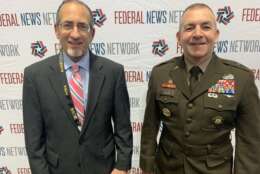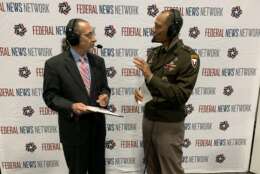Federal Drive
-
In today's Federal Newscast, federal agencies may get tools to hire military and law enforcement spouses as well as veterans quickly for remote positions.
October 13, 2023 -
Tanks, armored vehicles, trucks: The Army buys them all from contractors. But over their sometimes long life cycles, the Army relies on its own production and maintenance facilities. Those make up what the military calls the organic industrial base. At this week's Association of the U.S. Army (AUSA) conference, Federal Drive Host Tom Temin got an in-person, one-on-one update from Brig. Gen. Michael Lalor, the Commander of the Army's Tank-automotive and Armaments Command.
October 13, 2023 -
Both open and closed seasons are coming up. November 17 will mark the end of the continuing resolution, so the government could close when the money runs out. Just a few days earlier, open season arrives. That is when federal employees choose a health insurance carrier for 2024. For the rundown on all of this, Federal Drive Host Tom Temin spoke with John Hatton, of the National Active and Retired Federal Employee Association (NARFE).
October 13, 2023 -
Now two wars, which the U.S. is helping to supply, put the strain on the defense industrial base
October 12, 2023 -
When Congress passed the so-called Bipartisan Infrastructure law two years ago, it also strengthened buy-American requirements for construction projects. Now the final guidance is out from the White House on the BABA part of the law, Build American, Buy American.
October 12, 2023 -
Army platforms depend on software, and software has to run on the often old or limited hardware mounted aboard ground vehicles.
October 12, 2023 -
Few experiences, at least in the civilized world, are worse than airline screw-ups. Flights that take off hours late, if they take off at all. Passengers forced to sleep in cold, noisy airports. But a team at the Transportation Department has managed to get compensation for thousands of passengers.
October 12, 2023 -
In today's Federal Newscast, the Army Enterprise Marketing Office is modernizing its efforts to help reach Generation Z.
October 12, 2023








